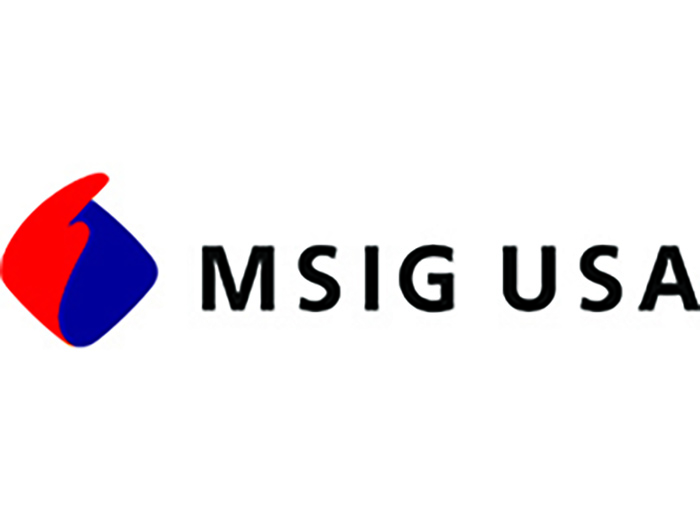Sponsored: Allianz Commercial
3 Key Areas to Review for Better International Risk Underwriting

Businesses operating internationally understand that risk isn’t always black and white.
That’s because each domicile comes with its own unique set of risks — not to mention cultures, attitudes, and approaches to day-to-day life. A good understanding of risk, then, requires deep cultural and economic analysis of each city of operation.
Good underwriting looks at all these items in order to cover businesses that operate across borders.
“When we’re looking at underwriting internationally, we’re looking at the likelihood of claims or what claims look like internationally. And that’s a little bit different than just looking at the United States. We’re still going to look at exposures, but how we approach the exposures are a little bit different,” said Samantha String, Multinational Practice Leader, Liability, Allianz Commercial. “Different factors exist within each locale that must be taken into account in order to effectively underwrite each area of operation.”
Here’s a look at three key areas that international underwriters should review when assessing risk, and what insureds should look for in their international insurance partner.
1) Location and Culture Play a Role in Risk

Samantha String, Multinational Practice Leader, Liability, Allianz Commercial
It goes without saying that each country has its own unique culture. But good international underwriters also know that understanding culture goes deeper than a country’s borders; each city, town and street has its own set of rules — and its own risks.
Look at the risk level of the U.S. as an example: Someone living in California is likely more concerned with the effect of a wildfire than someone in, say, Rhode Island. Likewise, Floridians are keen to stock up on flood insurance during hurricane season, while a Kansas native might be reviewing their tornado exposures.
And that’s just looking at locations domestically.
Internationally, different exposures, as well as local cultures, play a key role in how underwriters need to view and review the area for which they are underwriting.
String offered the following anecdote: “This is something that I learned early on in my career. When we think about a claim being paid out, we likely think it’s being paid in local currency. If a claim happens in Europe, we’re going to be paying euros. In Japan, yen. It’s not in USD.”
“But that’s not always the case. I once saw a claim from the Middle East that involved a driver who had hit some livestock. While The owner of the livestock was initially offered cash, in claims negotiation the inspector realized a more mutually beneficial settlement would be to replace the livestock.”
When underwriting, knowing the ways in which to keep claimant’s whole is imperative to successfully managing risk and addressing claims. Part of that is understanding the nuisances of their business and what will keep them going.
In the above example, a payment in “local currency” closed the claim at a fraction of the cost it might have been had the claim required a cash settlement. The insurance experts understood that, at the end of the day, “that livestock was even more valuable [than cash] to the claimant,” String said. “It was a solution that kept both business and the family in operation.”
2) How Litigious a Jurisdiction Is Can Affect Insurance
The U.S. is often considered a litigious environment, one driven in recent years by social inflation and nuclear verdicts. Not all countries have the same litigation rate, though like all trends, the legal landscape across borders is ever-changing.
“The legal environments in other countries aren’t always as litigious as that of the domestic U.S.,” String shared. “However, other countries are being influenced by the U.S.” — which is important for underwriters to keep an eye on.
“The influence from the U.S. is creating an increasingly litigious environment overseas, which is impacting the rate, capacity and availability of insurance,” String said.
While international risks typically are (and continue to be) a very profitable line of business within the U.S., the potential of increasing legal costs is slowly affecting the stability of rates and pricing. Good underwriters should be keeping up-to-date and staying on pace with these changes over time.
String did note that there is some reprieve in areas where socialized health care programs exist. However, it’s still an area that must be assessed when underwriting international programs.
3) The Effect of Health Care and Other Government-Funded Programs
Health care and government-funded programs tend to reduce potential claimants’ desire to file claims due to the fact that a socialized support system is in place.
“It’s not just health care,” String added. “It comes down to mental health programs, parental leave, both maternity and paternity, PTO, and just the overall cultural mindset.”
For countries that have socialized programming available, there is a larger sense that if something does happen, there is an infrastructure place in place to provide for and take care of the people and businesses impacted. This often makes potential claimants less willing to file suit for a perceived wrongdoing.
However, that does not mean that these areas are entirely exempt from claims.
As noted, some areas are becoming more influenced toward litigation by the controversial nature of the U.S. Personal liability, employment liability, auto lines and others are feeling that strain, said String, so underwriting in these areas means knowing how these factors impact each other.
Talking the Talk, Walking the Walk
Best practices are always changing, especially because risk constantly evolves. Compounded with that, more insurers are looking to enter the international space, making it an interesting time for insureds aiming to manage their risk.
Successful underwriting starts with understanding what impacts risk across borders. Coupling that understanding with data, a global network of information and home-grown research and analysis makes for a strong risk partner.
Allianz Commercial gets this, taking it one step further and applying this deep understanding to its underwriting process. The Allianz Multinational underwriting team is putting in the time and resources to be that strong risk partner. With a strong inclusion, diversity and belonging culture at Allianz, creating tailored and sustainable solutions for its diverse customer base is woven into the core of the business. This is reflected in its underwriting talent, as well as its appetite, claims and risk consulting services.
“We want long-term, long-standing partnerships, where both the insured and Allianz can grow together,” String said.
With European origins, Allianz’s overseas network, presence and knowledge base is already well established. And it is constantly advancing and improving to be the valuable resource its clients know it to be.
“When it comes to our professionals and understanding the nuisances of culture’s impact on risk and claims, we have more than just brokers or local admins and underwriters available; we have claims representatives, risk engineers and general operation teams that are processing the issuance across 240 countries and territories,” String said. “We have the time, technology and talent to remain agile in a constantly evolving world and the resources to provide our customers with customized insurance solutions that meet their individual, local needs.”
To learn more, visit: https://commercial.allianz.com/services/multinational-insurance.html.
This article was produced by the R&I Brand Studio, a unit of the advertising department of Risk & Insurance, in collaboration with Allianz Commercial. The editorial staff of Risk & Insurance had no role in its preparation.










